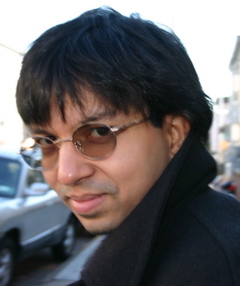
Home
Andrew Barbour
(Universität Zürich-Irchel)
Andrew Barron
(Yale University)
Sergey Bobkov
(University of Minnesota)
Ashwini Deo
(Yale University)
Farhad Ghassemi (MIT)
Matthew Harrison
(Brown University)
Oliver Johnson
(University of Bristol)
Abram Kagan
(University of Maryland)
Ioannis Kontoyiannis
(Athens University of Economics and Business)
Adam Marcus
(Yale University)
Prasad Tetali
(Georgia Institute of Technology)
Liyao Wang
(Yale University)
Tinghui Yu
(SUNY Binghamton)
Not surprisingly given that the number of scientists was much smaller a couple of centuries ago, most academics find that their academic family tree is ancient and features some well known characters. I couldn't resist the temptation of searching for my academic roots, aided by the Mathematics Genealogy Project. Below is the barebones story; blurbs about the lives and work of many of the people in this tree can be found on Wikipedia or on the blog of Craig Burrell, a Canadian physicist who is academically related to me.
My Ph.D. advisor was Ioannis Kontoyiannis, then at Brown University. Tracing back through a line of advisors leads to the famous 19th century German physicist Hermann von Helmholtz. Going further back is complicated because it seems to have been common at the time to have multiple advisors (which still occasionally happens), but even more interesting as a result. One branch leads through Hermann Boerhaave (the early 18th century Dutch physician/scientist who founded the modern academic hospital) to Jean Baptiste van Helmont (the Belgian physician/scientist who coined the word "gas") and to Paracelsus (Philippus Aureolus Theophrastus Bombastus von Hohenheim, the remarkable polymath who was the first systematic botanist, named "zinc", and pioneered the use of chemicals and minerals in medicine) in the 16th century. Other branches lead to Jakob Thomasius, the 17th century German philosopher and jurist who was a founding figure in studying the history of philosophy, as well as an advisor/mentor of the calculus co-inventor Gottfried Wilhelm Leibniz; to Desiderius Erasmus (or Erasmus of Rotterdam), the 15th century Dutch Renaissance humanist, Catholic priest, and theologian, whose questions would be influential in the Protestant Reformation and Catholic Counter-Reformation; to Thomas Cranmer, a leader of the English Reformation and Archbishop of Canterbury during the reigns of Henry VIII and Edward VI, whose advocacy for Henry's divorce from Catherine of Aragon contributed to the separation of the English and Roman Catholic Churches; and to Nicolaus Copernicus, the Renaissance astronomer who formulated the heliocentric cosmology accepted today (although Aristarchus of Samos in Greece and Aryabhata in India had proposed essentially heliocentric models many centuries earlier).
Last modified on September 1, 2011

|
Back Home |